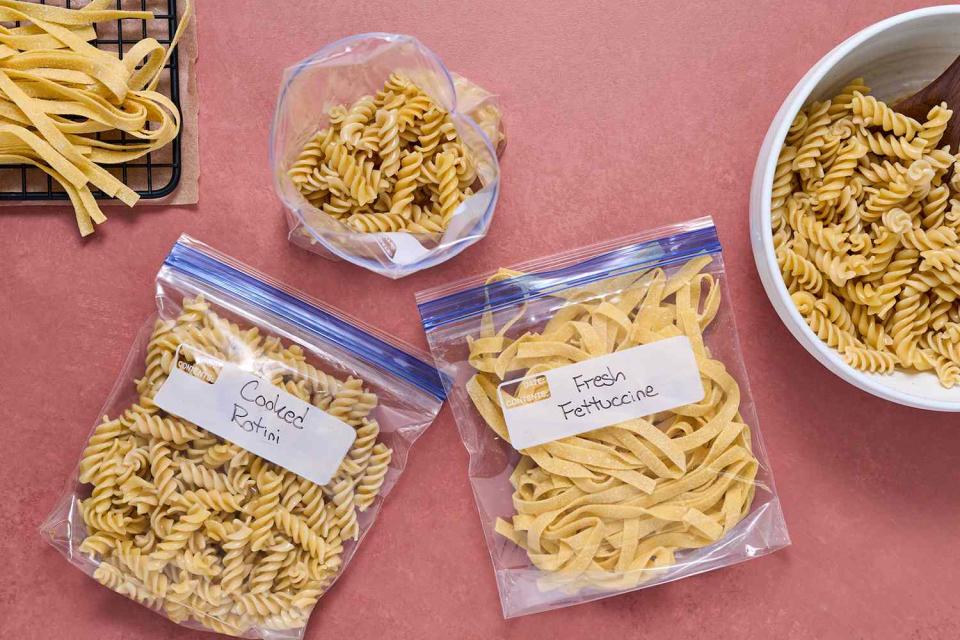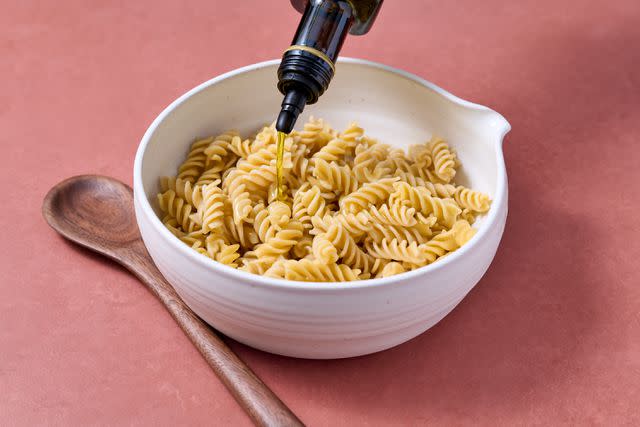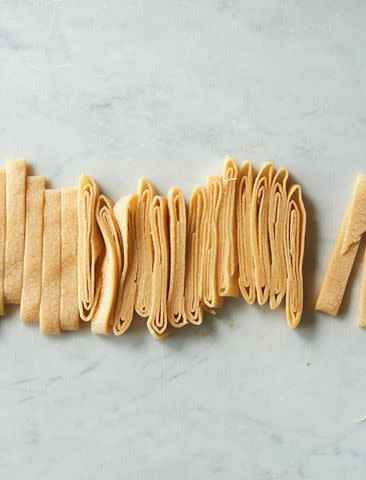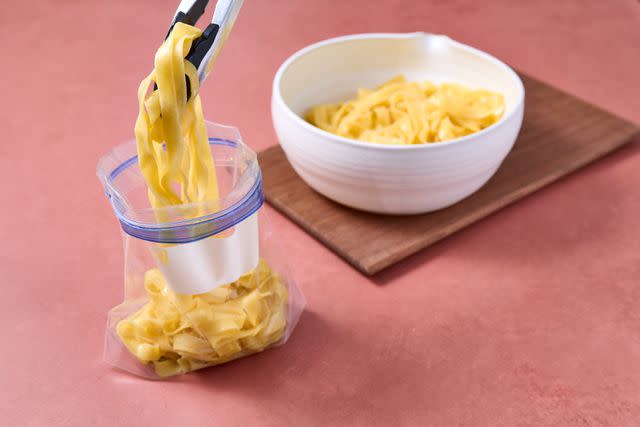How to Store Cooked Pasta in the Fridge or Freezer to Use Later
Whether you made too much or want a head start on prepping meals for later, follow these helpful tips on how to store cooked pasta in the fridge or freezer.

BHG/Niki Cutchall
Fact checked by Marcus Reeves
We've all made more pasta than we can finish in one sitting, and those leftovers can be tough to part with. Great news! You don't have to. While freshly cooked pasta recipes usually have the best flavor and texture, you can still save those leftover noodles for later. We'll show you how to store cooked pasta in your fridge or freezer (without it getting all mushy or stuck together) so you can reheat it for a quick meal. And if you like to make pasta from scratch, we've got tips for how to store fresh pasta, too.
Related: The 9 Best Glass Food Storage Containers That Easily Go From Freezer to Countertop

BHG/Niki Cutchall
How to Store Cooked Pasta
You'll have the most success storing leftover pasta if you keep the sauce and noodles separate. Keep that in mind before you mix sauce and pasta, especially if you're keeping your leftovers in the freezer (because, yes, you can freeze cooked pasta if you don't think you'll be eating it for several days or weeks). You'll want to freeze the sauce separately as the pasta and sauce require different times to thaw or reheat. Follow these steps for how to store cooked pasta.
Related: Italian Pasta Sauce Recipes That Rival a Restaurant
How to Store Cooked Pasta in the Refrigerator
Allow cooked pasta to cool slightly. It can then be stored in airtight containers (from $5, The Container Store) in the refrigerator for 3 to 5 days. Again, store pasta and sauce separately, if possible. To reheat, drop the pasta in boiling water for just a few seconds; drain.

BHG/Niki Cutchall
How to Store Cooked Pasta in the Freezer
Freezing pasta requires just one additional step than refrigerating. Cool the pasta slightly, drizzle with a bit of olive or cooking oil, and toss gently. Use about 1 tablespoon oil to 8 ounces cooked pasta. This helps prevent the pasta from sticking together when frozen. Spoon into airtight containers or freezer bags. Store for up to 2 months.
To defrost, place your bag of frozen pasta in a colander ($12, Target) in the sink and run cool water over it. Or, put the frozen pasta directly into boiling water or a simmering pasta sauce. Thawing and reheating time depend on the amount of pasta you're using, but 1 to 2 minutes is usually all you'll need to bring pasta to the desired temperature. Since the pasta is fully cooked, you just have to worry about getting it as warm as the sauce or other ingredients you're serving.
Related: 27 Healthy Italian Recipes That Don't Skimp on Flavor

How to Store Fresh Pasta
If you like making your own pasta at home, you should store it differently than dry pasta. You can keep boxes of purchased dried pasta in your pantry for a year or more. Since homemade pasta is fresh, it's more delicate. Here's how to store uncooked homemade pasta for up to 8 months.
After cutting your pasta, spread it on a wire cooling rack or hang it from a pasta drying rack ($30, Sur La Table), and let it dry for 2 hours. If you're using it soon, you can store it in an airtight container in the fridge for up to 3 days.
To freeze homemade pasta, let it dry for at least an hour. Then, place it in a freezer bag or container and freeze for up to 8 months. You can cook it straight out of the freezer; just add 1 or 2 minutes extra to the cooking time.
If you've already cooked more fresh pasta than you can eat, no need to waste it. Following our directions above can also apply when storing cooked fresh pasta. Keep the sauce separate if you can. Then you can reheat the noodles for your next meal.
Related: 4 Easy Ways You Can Cut Down on Food Waste Today
Stored pasta is easy to use for a quick dinner on busy weeknights. You can also use the extra time you would've spent making the pasta to create a from-scratch roasted garlic sauce or an easy puttanesca.

BHG/Niki Cutchall
For more Better Homes & Gardens news, make sure to sign up for our newsletter!
Read the original article on Better Homes & Gardens.

